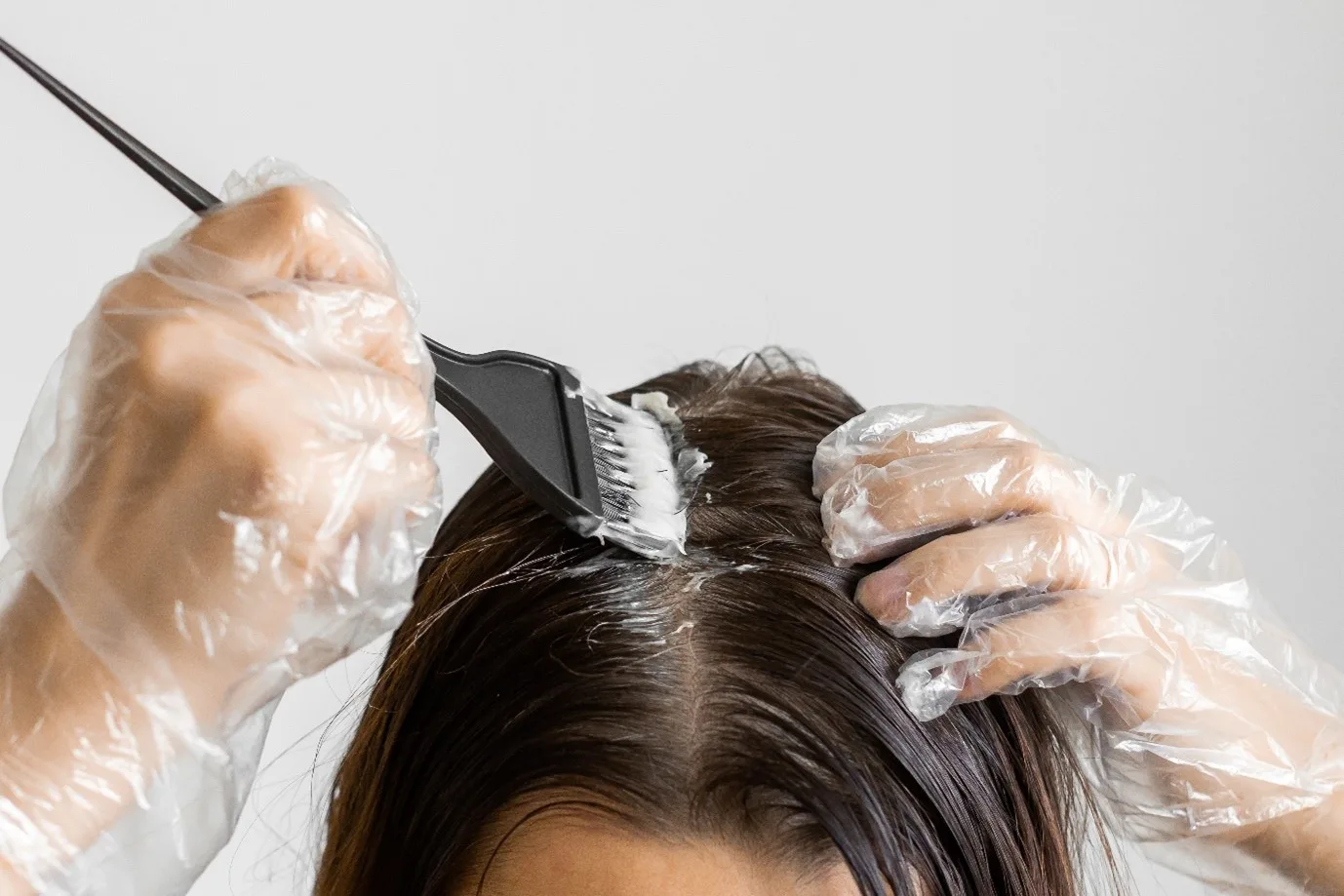SIDE EFFECTS OF HAIR DYEING
How worried should you be about the side effects of hair dyeing?

Everybody has this secret desire of trying out new hair colours. If you finally pluck the courage to get it done, you want it to be a stress-free and happy experience. But that can all change if you aren’t aware of the types of hair colour and how bad things can get.
It might sound extreme, but it is entirely possible to have a negative outcome from hair colouring. If you’re wondering is hair dye safe, it all depends on what products you use and how it responds to your hair type. Let’s first understand the mechanism before exploring the side effects of hair dyeing.
What are the types of hair colouring and how does it work?
Most dyes have various chemicals that are used to crack open the hair strands and colour the hair shaft. Ammonia, Hydrogen peroxide and p-Phenylenediamine (PPD) are the most common chemicals found in hair colouring. The way it works is that ammonia breaks the outer layer known as the cuticle and allows the hydrogen peroxide to remove the existing colour. Then PPD does its magic and dyes the hair shaft to the required colour. But the presence of these chemicals depends on the type of dye you use, as some come without them.
Permanent hair dye –
This is the most common type of hair colouring you will find and is widely used. It does not mean that it permanently changes your hair colour for life. It only implies that it can stay on your hair for a long time, sometimes even months. You can’t clear it away with one shampoo wash. These generally contain ammonia, hydrogen peroxide, PPD and sometimes even lead acetate.Semi-permanent dye –
These dyes are free of ammonia and hydrogen peroxide. Thus, they cannot dye your hair from within and come off after 8-10 washes. You can find natural versions like Henna or Indigo, or you can even get synthetic versions that contain milder chemicals. These generally have lesser hair colour side effects.Demi-permanent dye –
This fall between permanent and semi-permanent hair dyes. It is ammonia free but contains chemicals that can break into the hair strand and colour it. It can contain smaller amounts of hydrogen peroxide and has less damaging side effects of hair dyeing. Demi permanent generally darkens your existing hair colour and stays for a longer time than a semi-permanent dye.Temporary dye –
This dye does not get into the hair strand and only coats it from outside. It gets rinsed away when you wash or shampoo your hair. These are probably the least harmful hair dyes, but they can stain damaged hair through repeated use.Gradual dye –
This is generally a solution of metals that can get washed off easily. It does not contain any PPD or heavy chemicals, and the hair dye effects are less damaging. You need to keep applying this dye and it darkens your hair over a longer period of time.
You also have ammonia free, paraben free, cruelty free hair dyes that can suit whatever style you require. But all of them have some drawback and the hair colour side effects depends on how your body reacts to it.
What are the side effects of hair dyeing?
Allergic reaction –
This is the most common effect of using hair dye. If your body reacts to it, you can end up with an itchy scalp, breakouts, and swelling.Moisture loss -
Hair dye has a tendency of drying out your strands. When it breaks open your cuticle layer, it allows the moisture within your hair strand to escape. It can change the texture of your hair, leaving it dry and brittle.Hair damage –
Overexposure and the use of bad products can permanently damage your hair strands. It can destroy the cuticle layer and the hair shaft within. This is usually due to high ammonia levels.Contact dermatitis –
PPD and lead acetate can cause breakouts and itching on your scalp. Henna and Indigo, although natural, can also be one of the causes for this problem.Respiratory problems –
Inhalation of these chemicals can lead to respiratory issues like asthma, especially due to hydrogen peroxide.Pregnancy risks –
Although there is no definitive link between the two, it is always recommended to avoid hair colouring when you’re pregnant.Dandruff –
Hair dye cannot be the cause of dandruff, but it can strip the natural lipid layers from your scalp and allow the dandruff causing fungus to take hold.Cancer risk –
Certain hair dyes used to contain heavy chemicals which were known carcinogens. Although most of these have been removed, it is important to check the products you use for any known risks.Hair loss –
Hair colour side effects like moisture loss and increase in scalp inflammation, can weaken the hair roots on your scalp. This can lead to an increase in hair fall if not handled at the right time.What can you do?
There are many things you could do to keep these hair dye problems in check. Here are some hair care tips to tackle such problems. The first and foremost thing to do is a patch test. Apply a bit of the dye on a small part of your body and wait for 48 hours. If you develop any form of burning, stinging or inflammation, do not apply it to your hair.
You should also keep a healthy scalp before going for a treatment. Use scalp shampoos that remove any dandruff or germs present. Avoid washing your hair two days before your hair dye treatment, to allow the natural oils to coat your hair.
Once you’ve got the colouring done, it is important to keep your hair hydrated and clean. Use conditioners and essential oils that are meant for coloured hair. Get rid of any heat treatment, such as straighteners and hair blowers, as these can dry out your hair even more. Shampoo regularly, while protecting your head from UV rays, pollution, and dust. But ensure not to over-wash your clean hair as that can also dry out your strands.
You can use shampoos that are made for coloured hair, such as the Head and Shoulders Cool Menthol 2 in 1 shampoo and conditioner. This is gentle enough for chemically treated hair and leaves you feeling revitalised. You could also use the Head and Shoulder Silky Black for your coloured hair, which can restore dry and damaged hair strands. It is also a great way on how to get rid of dandruff.
Taking all these steps can help manage your colour treated hair and possibly control the side effects of hair dyeing. Always approach this cautiously and be careful with what you apply to your hair.



